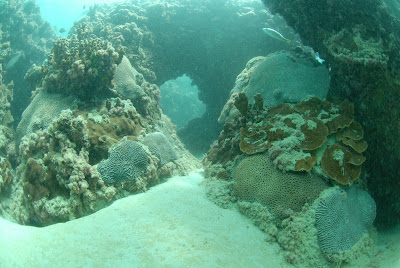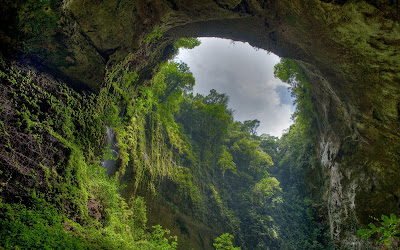At 40km from Rouen, Chateau Gaillard is a classified historic monument (classified in 1852) standing in impressive ruins above the village of Les Andelys in the Normandy countryside.
+%E2%80%93+Ch%C3%A2teau+Gaillard,+Normandy+1.jpg) |
| (France) – Château Gaillard, Normandy |
Brief history of Chateau Gaillard
The castle was built by Richard the Lionheart over a two year period starting in 1196, to an unusual design that involved successive rings of moats and fortifications, making the inner keep almost impregnable.
+%E2%80%93+Ch%C3%A2teau+Gaillard,+Normandy+2.JPG) |
| (France) – Château Gaillard, Normandy |
The castle had a colourful history through the Middle Ages, including a terrible siege in 1203 in which many hundreds died of hunger in the castle, as part of the wars between England and France at that time, and was won and changed hands between the English and French at various times during the Hundred Years War.
 |
| (France) – Château Gaillard, Normandy |
Various sieges and imprisonments continued during the centuries that followed - including the imprisonment (and death) of the adulterous wife of Louis X. In 1417 the castle held out against a siege by the English for 16 months, eventually failing because the last rope that was being used to get water from the wells broke and they at last were forced to surrender.
+%E2%80%93+Ch%C3%A2teau+Gaillard,+Normandy+4.JPG) |
| (France) – Château Gaillard, Normandy |
Largely abandoned the castle was already falling to ruin until Henry IV had it substantially destroyed in 1603 - for safety reasons rather than military reasons.
+%E2%80%93+Ch%C3%A2teau+Gaillard,+Normandy+5.JPG) |
| (France) – Château Gaillard, Normandy |
Visiting Chateau Gaillard
The sunstantial ruins of the castle that remain are a romantic and evocative sight on the hill above Les Andelys village, with far reaching views over the Seine Valley, and are a highlight of a visit to the region.
+%E2%80%93+Ch%C3%A2teau+Gaillard,+Normandy+6.jpg) |
| (France) – Château Gaillard, Normandy |
The original layout is still apparent, largely in the form of three defensive walls (the inner, middle and outer baileys) and the substantial keep inside the inner bailey. A particular innovation at gaillard was the use of machicolations* on the walls, a technique that substantially protected the soldiers in the castle from external attack and was virtually unknown in earlier castles.
+%E2%80%93+Ch%C3%A2teau+Gaillard,+Normandy+7.jpg) |
| (France) – Château Gaillard, Normandy |
*The use of a 'stepped' wall around the top of the defences, so that soldiers could shoot from between sections of wall - like the top of the walls in a childs drawing of a castle.
+%E2%80%93+Ch%C3%A2teau+Gaillard,+Normandy+8.jpg) |
| (France) – Château Gaillard, Normandy |
Visiting the castle you feel that you are walking in the footsteps of the kings and soldiers that have come before you, and Chateau Gaillard is a fascinating testament to the events that have taken place here. it also has nice views across the village below and surrounding countryside.
+%E2%80%93+Ch%C3%A2teau+Gaillard,+Normandy+9.jpg) |
| (France) – Château Gaillard, Normandy |
+%E2%80%93+Ch%C3%A2teau+Gaillard,+Normandy+10.jpg) |
| (France) – Château Gaillard, Normandy |
Suggested places to visit near Chateau Gaillard, France
- Lyons-la-Foret: 17km
- Giverny Gardens 21km
- La Roche-Guyon 24km
- Rouen 31km
- Evreux 32km
- Gerberoy 45km
- Jumieges Abbey 48km
- Abbey of Bec-Hellouin 50km
- Beauvais 54km
- Villa Savoye 57km
- Caudebec-en-Caux 59km
(France This Way)
Phoebettmh Travel
Phoebettmh Travel


+%E2%80%93+The+Goreme+Valley+of+Cappadocia,+Turkey+1.jpg)
+%E2%80%93+The+Goreme+Valley+of+Cappadocia,+Turkey+2.jpg)
+%E2%80%93+Fairy+Chimeny+Hotel+in+Goreme.jpg)
+-+Goreme+Open+Air+Museum.jpg)
+%E2%80%93+The+Goreme+Valley+of+Cappadocia,+Turkey+3.jpg)
+%E2%80%93+The+Goreme+Valley+of+Cappadocia,+Turkey+4.jpg)
+-+Goreme+Open+Air+Museum+2.JPG)
+%E2%80%93+The+Goreme+Valley+of+Cappadocia,+Turkey+5.jpg)
+%E2%80%93+The+Goreme+Valley+of+Cappadocia,+Turkey+6.jpg)
+-+Goreme+Open+Air+Museum+3.jpg)






+-+My+Son+Sanctuary+1.jpg)
+-+My+Son+Sanctuary+2.jpg)
+-+My+Son+Sanctuary+3.JPG)

+-+My+Son+Sanctuary+5.jpg)
+-+My+Son+Sanctuary+6.jpg)
+-+My+Son+Sanctuary+7.jpg)
+-+My+Son+Sanctuary+8.jpg)
+-+My+Son+Sanctuary+9.jpg)
+-+My+Son+Sanctuary+10.jpg)
+-+My+Son+Sanctuary+11.JPG)
+-+My+Son+Sanctuary+12.jpg)
+-+My+Son+Sanctuary+13.jpg)












